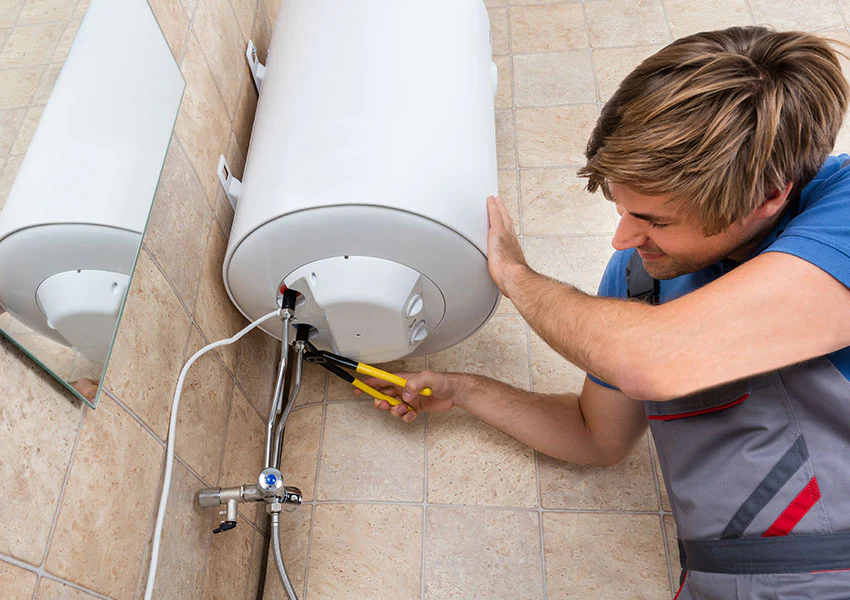Important Guidance on Caring for Your Home's Hot Water System
Important Guidance on Caring for Your Home's Hot Water System
Blog Article
We've found this post pertaining to How to Maintain a Hot Water Heater in a Few Simple Steps down the page on the web and reckoned it made perfect sense to talk about it with you here.

Warm water is vital for daily comfort, whether it's for a revitalizing shower or cleaning dishes. To ensure your warm water system runs efficiently and lasts much longer, regular maintenance is vital. This post provides useful pointers and insights on exactly how to keep your home's warm water system to avoid disruptions and costly repair services.
Intro
Maintaining your home's hot water system may appear challenging, however with a couple of straightforward steps, you can ensure it runs efficiently for several years to come. This overview covers everything from understanding your hot water system to do it yourself upkeep tips and knowing when to employ professional assistance.
Value of Keeping Your Warm Water System
Regular maintenance not only expands the lifespan of your hot water system but likewise ensures it runs effectively. Disregarding maintenance can result in reduced effectiveness, greater power costs, and also early failure of the system.
Signs Your Hot Water System Needs Maintenance
Knowing when your hot water system needs attention can stop significant problems. Watch out for indicators such as irregular water temperature level, odd sounds from the heating system, or corroded water.
Purging the Hot Water Heater
Purging your hot water heater eliminates sediment buildup, enhancing performance and lengthening its life.
Monitoring and Changing Anode Rods
Anode poles stop rust inside the storage tank. Inspecting and changing them when broken is critical.
Facility Concerns Needing Expert Help
Examples include major leaks, electric issues, or if your water heater is regularly underperforming.
Routine Professional Maintenance Benefits
Specialist upkeep can include thorough examinations, tune-ups, and making certain conformity with safety and security requirements.
Examining and Adjusting Temperature Level Settings
Adjusting the temperature level setups guarantees optimal efficiency and security.
Do It Yourself Tips for Upkeep
You can carry out numerous upkeep tasks yourself to maintain your hot water system in leading condition.
Looking for Leakages
On a regular basis examine pipelines and connections for leakages, as these can cause water damage and greater bills.
Recognizing Your Warm Water System
Before diving right into maintenance jobs, it's useful to recognize the fundamental components of your warm water system. Commonly, this consists of the water heater itself, pipes, anode rods, and temperature level controls.
Month-to-month Maintenance Tasks
Normal regular monthly checks can aid catch small issues prior to they escalate.
Examining Pressure Alleviation Valves
Testing the pressure safety valve ensures it works properly and prevents too much pressure build-up.
Protecting Pipelines
Insulating hot water pipelines minimizes warmth loss and can save power.
When to Call a Specialist
While DIY upkeep is valuable, some concerns require expert experience.
Conclusion
Routine upkeep of your home's warm water system is important for efficiency, durability, and price financial savings. By following these suggestions and recognizing when to look for professional assistance, you can ensure a reputable supply of warm water without unanticipated disruptions.
How to Maintain an Instant Hot Water Heater
Before tinkering with your hot water heater, make sure that it’s not powered on. You also have to turn off the main circuit breaker and shut off the main gas line to prevent accidents. Also turn off the water valves connected to your unit to prevent water from flowing into and out of the appliance. 2. When you’re done, you have to detach the purge valves’ caps. These look like the letter “T†and are situated on either side of the water valves. Doing so will release any pressure that has accumulated inside the valves while at the same time avoid hot water from shooting out and burning your skin. 3. When the purge valves’ caps are removed, you have to connect your hosing lines to the valves. Your unit should have come with three hoses but if it didn’t, you can purchase these things from any hardware or home repair shops. You can also get them from retail stores that sell water heating systems. Read the user’s manual and follow it to complete this task properly. When the hosing lines are connected, open the purge port’s valves. 4. You should never use harsh chemical cleaners or solutions when cleaning your unit. Make use of white vinegar instead. It should be undiluted and you’ll probably use about 2 gallons. 5. Now flush your water heater. This task should probably take about 40 minutes. We can’t give you specific directions for this because the procedure is carried out depending on the type, model and brand of your heater. With that being said, refer to the user’s manual. 6. When you’re done draining the unit, you have to turn off the purge port valves again. Remove the hosing lines that you earlier installed on each of the water valves. Put the valve caps (purge port) back in their respective places and be very careful so as not to damage the rubber discs that are found inside these caps. 7. Now that everything’s back in place, check your user’s manual again to find out how to reactivate your water heating system. 8. Once it is working, turn one of your hot water faucets on just to let air pass through the heater’s water supply pipes. Leave the tap on until water flows smoothly out of it. https://www.orrplumbing.com/blog/2014/september/how-to-maintain-an-instant-hot-water-heater/

Hopefully you enjoyed reading our excerpt on How to Maintain a Hot Water Heater in a Few Simple Steps. Thank you so much for taking a few minutes to read through our post. Sharing is caring. You never know, you may just be helping someone out. Thanks a lot for your time. Please pay a visit to our blog back soon.
Schedule Now! Report this page